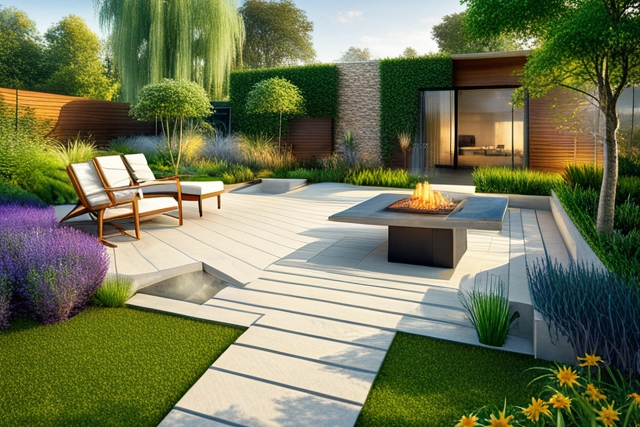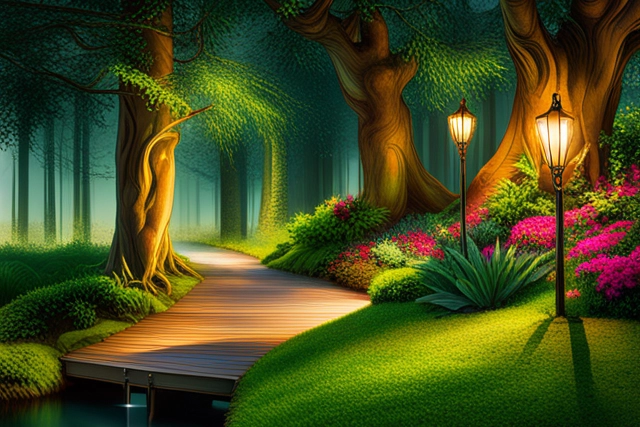
Importance of Garden Design for Beginners
Gardening is not just a hobby, it’s a creative journey that allows you to transform an ordinary space into a vibrant oasis. Whether you have a sprawling backyard or a cozy balcony, understanding the basics of garden design can help you create a visually appealing and functional outdoor space. This article aims to provide design tips specifically tailored for beginners, so you can embark on your gardening adventure with confidence.
Understanding the Basics of Garden Design
Before diving into the world of garden design, it’s important to grasp the fundamental concepts that lay the groundwork for creating a visually cohesive and harmonious garden. Garden design involves a careful combination of various elements and principles that work together to create a stunning outdoor space.
Elements of Design
Color, texture, form, and scale are the key elements of garden design. Color adds vibrancy and visual interest, while texture creates depth and variation. Form refers to the shape and structure of plants and other garden elements, and scale involves creating a balanced composition by considering the size and proportion of different elements.
Principles of Design
To achieve a well-designed garden, certain principles must be considered. Unity ensures that all elements in the garden work together harmoniously, while balance creates a sense of equilibrium. Proportion involves establishing the right relationships between different elements, and rhythm creates a visual flow throughout the space.
Assessing Your Space and Needs
Before you start designing your garden, take the time to assess your available space and understand your personal preferences and goals. Evaluating the characteristics of your space, such as sunlight, soil type, and climate, will help you determine which plants will thrive in your garden.
Additionally, identifying your functional requirements and aesthetic preferences will guide your design decisions, ensuring that your garden reflects your personal style while meeting your needs.

Planning Your Garden Design
Once you have a clear understanding of your space and goals, it’s time to put your ideas on paper. Sketching a rough layout of your garden will allow you to visualize different areas and create zones for specific purposes.
When choosing plants, consider their characteristics, such as height, spread, and bloom time, to ensure they complement each other and provide visual interest throughout the seasons. Creating focal points with eye-catching features, such as sculptures or ornamental plants, will add depth and charm to your garden design.
Implementing Your Garden Design
Implementing your garden design involves preparing the soil, installing hardscape elements, and carefully planting your chosen plants. Test your soil and improve it with organic amendments and fertilizers to create an optimal growing environment. Install hardscape elements like paths, walkways, and patios to define and connect different areas of your garden.
When planting, follow proper spacing guidelines and provide adequate mulching and watering to ensure healthy growth. Consider planting for seasonal succession to keep your garden blooming throughout the year.

Maintaining Your Garden
A well-maintained garden requires regular attention and care. Proper watering techniques, including deep watering and avoiding overwatering, will ensure the health and vitality of your plants. Pruning and trimming plants at the right time will promote their growth and maintain their shape. Additionally, being aware of common garden pests and diseases and employing organic pest control methods will help protect your plants without harming the environment.
Adding Personal Touches
To truly make your garden a reflection of your personality, consider adding personal touches. Incorporate garden décors, such as sculptures, ornaments, and furniture, to add character and create focal points. Lighting your garden not only enhances its nighttime ambiance but also adds an extra layer of safety and security.

Garden design can be an exciting and rewarding experience
Designing a garden can be an exciting and rewarding experience, especially for beginners. By understanding the basics of garden design, assessing your space and needs, and implementing thoughtful choices, you can create a stunning outdoor sanctuary. Remember, gardening is a continuous learning process, so don’t be afraid to experiment and let your creativity blossom. So, grab your gardening tools and get started on your journey to design the garden of your dreams.


